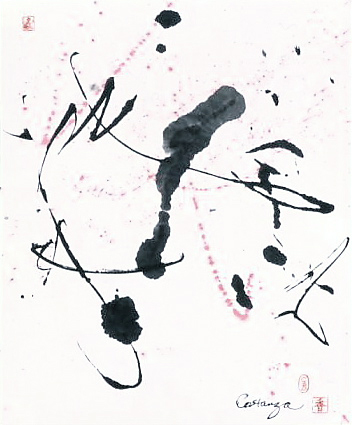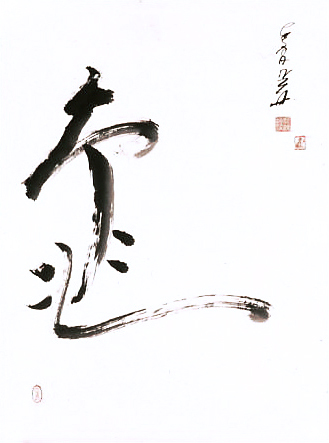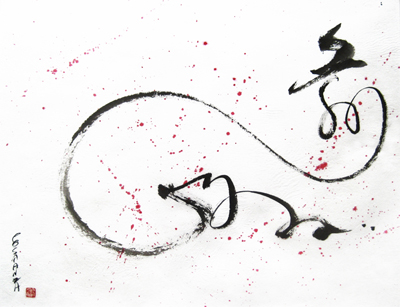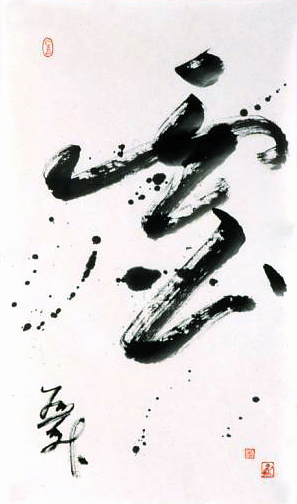Zen Flamenco
Flamenco and Zen calligraphy are progeny of the same Muse. Both embrace a particular and distinctive way of expressing emotion, and both are grounded in a long tradition. The transitory nature of experience challenges the flamenco performer and the calligrapher to capture essence. Cante jondo are Gypsy songs of love, death, despair. The cantaor (singer) wrestles with sound through infinite nuances. Stretched vowels and punctuated starts remind me of long syncopated, calligraphic strokes. Flamenco dancers ("La Bailaora" and "El Bailaor") sweep across the floor in a choreography of cursive calligraphy. "Buleria" is a lively dance, a grand finale of flamenco exuberance, improvisation and spontaneity. The performers playfully swap roles: a singer picks up a guitar and gives us a rasgueado (flamenco riff), the guitarist jumps to his feet, moves to center stage, arms uplifted, fingers snapping and dances buleria. Olé explodes at the tablao — a magic moment when all become flamenco. These paintings are sumi-e (ink paintings), an art form practiced in Asia thousands of years. The ink is prepared by rubbing an ink stick, made of pine soot and hardened with resin, against an ink stone with a few drops of water. The artist’s objective is to distill the essence of an image by a few critically balanced strokes on washi (commonly called rice paper). That sumi-e has influenced Franz Kline and the New York abstract expressionists is evidence of its enduring power.



